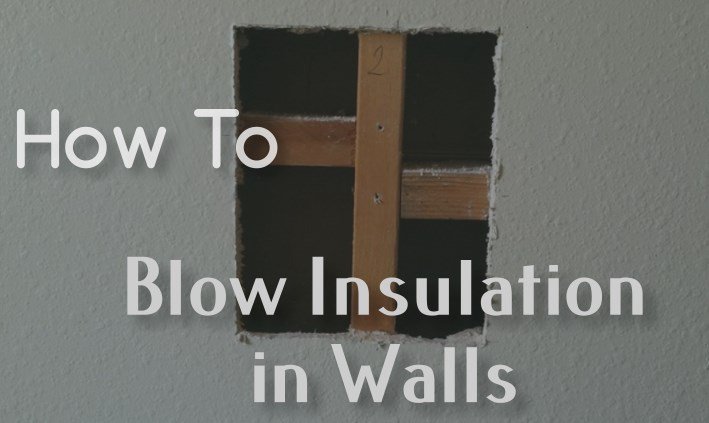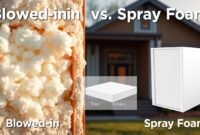Insulating an existing wall, such as with blown-in cellulose insulation, is more challenging than attic insulation because it involves modifying both the exterior and interior walls. This home improvement project can be costly if it involves removing the wall covering to insulate the existing wall.
However, the energy savings and enhanced indoor air quality can make it a worthwhile investment.
That’s why the blown-in insulation method, particularly using materials like cellulose insulation, is a perfect choice for home insulations. It is less expensive and creates less mess during installation.
Understanding the pros and cons of different types of insulation, such as open-cell spray foam and blown-in cellulose, is crucial before starting the project.
Here’s how to blow in insulation in walls
- Locate Wall Studs and Blocks:
- Use a stud finder to locate each wall stud and horizontal block near or at the center of the wall’s height.
- Mark each horizontal block and stud center with blue masking tape.
- Drill Access Holes:
- Using a hole saw and drill, make a hole approximately 6 inches below the ceiling in the center between each set of studs.
- If there are diagonal or horizontal blocks, make a second hole an inch or two below the block. Ensure the holes are large enough for the insulation hose and fill one cavity at a time for even distribution.
- Proper ventilation and moisture control during installation are critical to prevent mold growth and maintain indoor air quality. This method significantly enhances energy efficiency and soundproofing in existing homes and new constructions.
- Remove Old Insulation:
- Use a vacuum to remove any old insulation.
- Blow in Insulation:
- Rent a blow insulation machine.Insert the blower hose into the first hole and direct the nozzle deep into the wall cavity.Wrap a rag around the hose where it touches the wall to make a seal.Have a partner turn on the blower while you hold the hose. As the cavity fills, pull the hose back.Stop when you sense resistance and can no longer add insulation.
- Seal and Patch:
- Replace the drywall cuttings and patch and paint over the holes on your wall.

When I first attempted blown-in insulation, I was surprised at how quickly the process went once I used the blower machine. Ensuring all wall cavities were evenly filled was key to preventing cold spots and improving overall insulation performance.
Read also: How to Cut Roll Insulation Accurately
Cost of Blowing Insulation in Walls
- The cost varies depending on the area, material, and method used.
- Generally, the cost per square foot ranges from $0.64 to $1.19.
- DIY cost for a 500-square-foot area ranges from $145 to $200.
- Professional job costs add $150 to $300 for manpower, totaling $300 to $500 for 6 work hours.
Addition: According to the EPA, proper insulation can save approximately 15% of your home’s heating and cooling costs, making the investment in blown-in insulation cost-effective and beneficial for long-term energy savings.
Insulation Comparison Table
| Insulation Type | Benefits | Cost per Square Foot | DIY Cost (500 sq. ft.) | Professional Cost |
|---|---|---|---|---|
| Fiberglass | Common, budget-friendly | $0.64 – $1.19 | $145 – $200 | $300 – $500 |
| Cellulose | Great for soundproofing, eco-friendly | $0.64 – $1.19 | $145 – $200 | $300 – $500 |
| Spray Foam | Excellent for moisture control, high R-value | $1.00 – $2.00 | $200 – $300 | $400 – $600 |
Conclusion
Mastering blowing insulation into walls can lead to significant energy savings and improved home comfort. With proper planning and execution, you can achieve effective insulation without extensive renovations. Remember, attention to detail and the right techniques are key to a successful insulation project.


